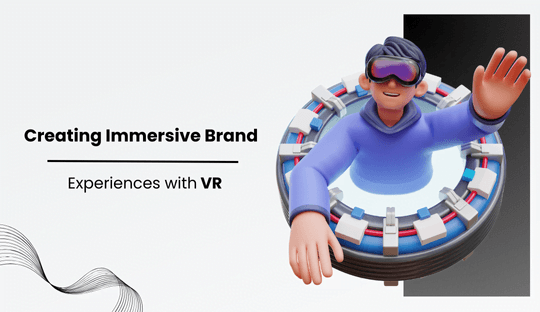
Creating Immersive Brand Experiences with VR
In the dynamic landscape of digital marketing, Flykez CO, a leading creative brand company in Slovakia, stands out by integrating cutting-edge technologies into their service offerings. One such innovation is the use of Virtual Reality (VR) to create immersive brand experiences. As businesses continuously seek new ways to engage with their audiences, VR offers unparalleled opportunities for creating memorable and impactful interactions.
The Evolution of Brand Experiences
Traditionally, brand experiences were limited to physical interactions and traditional media. However, with the advent of digital technologies, the scope has broadened significantly. Today, Flykez offers a comprehensive range of services including Website Design & Development, Search Engine Optimization, Brand Design & Brand Identity, Digital Marketing, and UI & UX Design. By leveraging these services, brands can create cohesive and compelling experiences that resonate with their audiences across multiple touchpoints.
Harnessing the Power of VR
Virtual Reality takes brand engagement to the next level by offering an immersive experience that allows users to interact with a brand in a simulated environment. This technology can be used in various ways to enhance marketing efforts:
- Product Demonstrations and Simulations VR can create realistic simulations of products, allowing customers to experience them virtually before making a purchase. This is particularly beneficial for high-value items like real estate, automobiles, and luxury goods.
- Virtual Tours For industries such as travel and tourism, VR can offer virtual tours of destinations, hotels, and resorts, giving potential customers a taste of what to expect, thereby influencing their decision-making process.
- Interactive Advertisements Unlike traditional ads, VR ads can engage users in a more interactive and memorable way. These ads can be designed to offer a full 360-degree experience, making the brand message more impactful.
- Training and Education VR can be used for training employees and educating customers. For instance, a company can create VR modules to train their staff on new products or processes, ensuring a higher retention rate of the information.
Integrating VR with Digital Marketing
At Flykez, we understand the importance of integrating VR with other digital marketing strategies to maximize its impact. Here’s how we do it:
Voice Search Optimization
As voice search becomes increasingly popular, it’s essential to optimize VR content for voice commands. This makes it easier for users to navigate VR environments using natural language, enhancing their overall experience.
Marketing Automation
By combining VR with marketing automation, brands can deliver personalized experiences at scale. For example, automated systems can trigger VR experiences based on user behavior, ensuring that each interaction is relevant and timely. Also Read About The Rise of Social Commerce: Turning Likes into Sales in 2024
User-Generated Content
Encouraging users to create and share their own VR content can significantly boost brand visibility and engagement. Flykez helps brands design VR experiences that are easy to share on social media platforms, thereby leveraging the power of user-generated content.
Webinars in Marketing
VR can transform traditional webinars into immersive experiences. Imagine attending a virtual conference where you can interact with other attendees, visit virtual booths, and participate in live Q&A sessions, all from the comfort of your home.
Affiliate Marketing
Integrating VR into affiliate marketing strategies can create more engaging promotional content. Affiliates can use VR to showcase products in a more dynamic way, increasing the likelihood of conversions.
E-commerce Marketing
For e-commerce businesses, VR can recreate the in-store shopping experience online. Customers can explore virtual stores, interact with products, and make purchases, all within a VR environment.
Email Marketing Trends
Incorporating VR elements into email marketing can make campaigns more engaging. Interactive VR content in emails can significantly improve click-through rates and overall engagement.
Crisis Management
In times of crisis, VR can provide a platform for effective communication. Brands can use VR to simulate crisis scenarios and train their teams on how to respond, ensuring they are well-prepared for any situation.
The Future of Brand Experiences
The potential of VR in creating immersive brand experiences is immense. As technology continues to evolve, so will the ways in which brands can engage with their audiences. Flykez is committed to staying at the forefront of these innovations, helping brands in Slovakia and beyond to leverage the power of VR and create truly unforgettable experiences.
Conclusion
Creating immersive brand experiences with VR is not just a trend; it’s a revolutionary approach to digital marketing. At Flykez, we combine our expertise in Website Design & Development, SEO, Brand Design, Digital Marketing, and UI & UX Design to help brands harness the full potential of VR. By integrating VR with other digital marketing strategies, we ensure that our clients can deliver engaging, memorable, and impactful experiences to their audiences. Visit us at www.flykez.com to learn more about our services.
